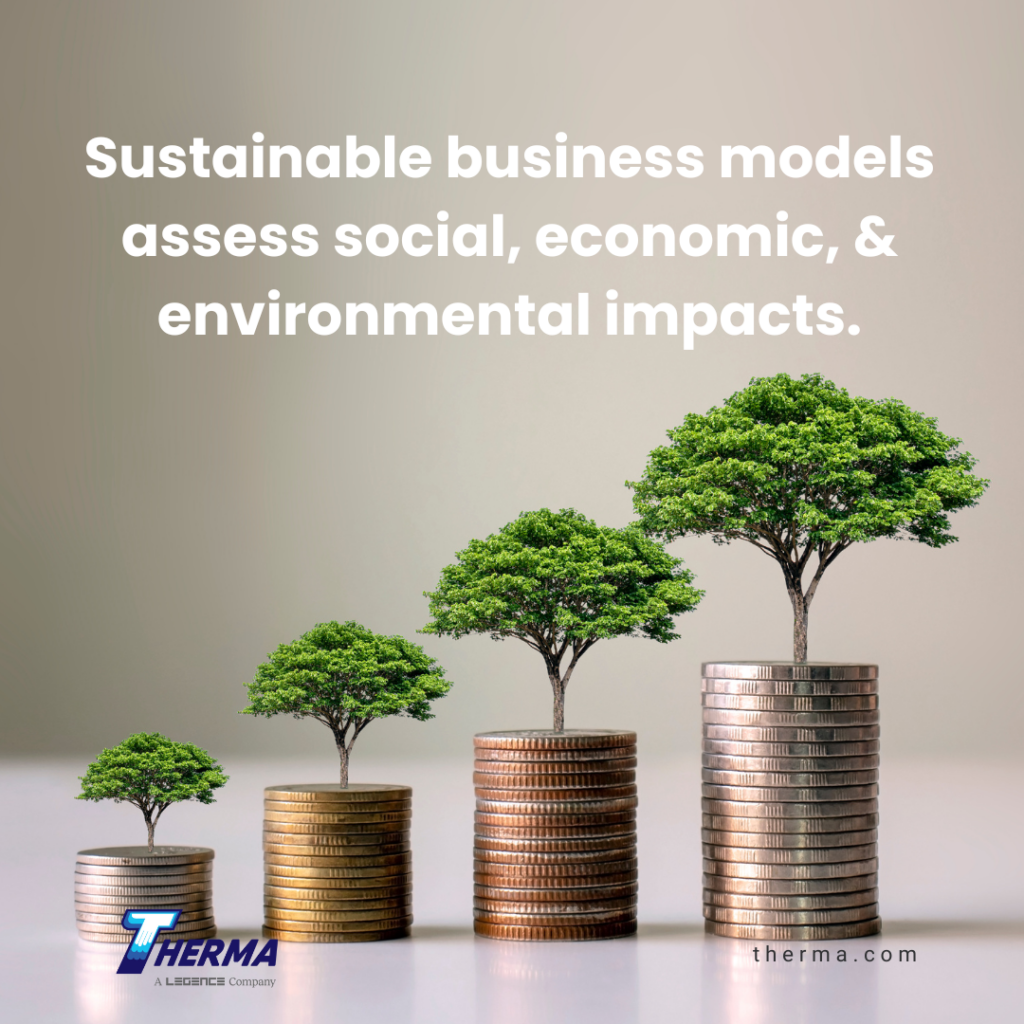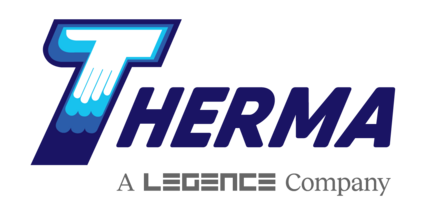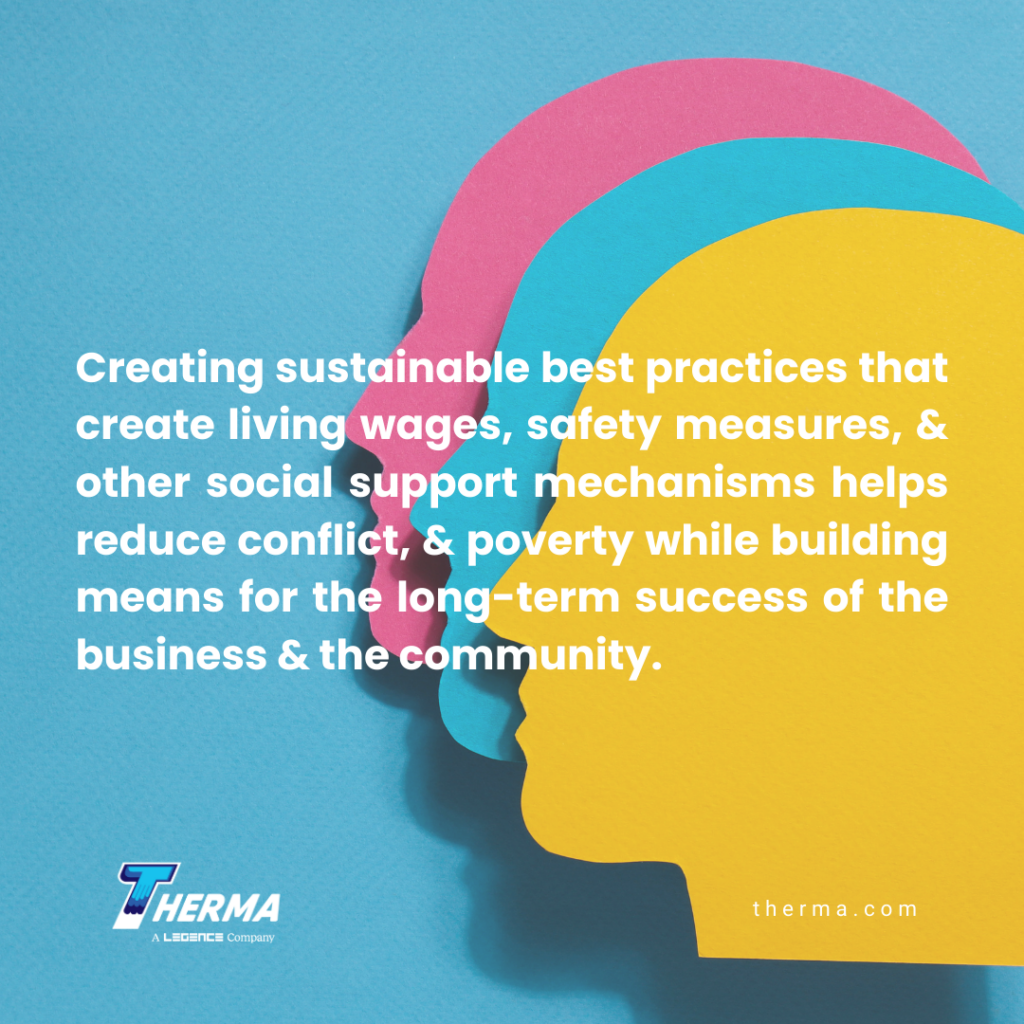Sustainable practices can benefit the environment, economic development, and the social fabric of communities. From a business perspective, sustainability may seem challenging but companies worldwide have created long-term benefits by operating within a triple bottom line mentality. Here’s an overview of the three pillars of sustainability and how they can create business value.
Sustainability: People, Profit, Planet
When looking at sustainability there is much more than environmental considerations. Sustainable business models assess social, economic, and environmental impacts. This framework has been a guideline for decades, notably laid out in the 1969 National Environmental Policy Act (NEPA) from the U.S. Environmental Protection Agency (EPA). The basis of the policy was “to create and maintain conditions under which humans and nature can exist in productive harmony, that permit fulfilling the social, economic, and other requirements of present and future generations.”
In practice, the policy has led to business examples that are economically viable, embrace environmental protection, and create social equity. For example, the rise of green buildings has created real estate portfolios with long-term energy savings. Today, more than 10,000 businesses are employee-owned, putting profit management beneficiaries at every workstation. These types of business strategies are innovative examples of how sustainability can be a boon to business while protecting natural resources and building economically viable communities.

1. Environmental Protection
Natural resources are part of the economy, providing the raw materials that manufacturing and production depend on. The environment encompasses and supports economic and social aspects of modern life from transit to food and more. The term sustainable development was coined in the 1980s and is defined as “development that meets the needs of the present without compromising the ability of future generations to meet their own needs.”
It includes topics such as air and water quality, resource preservation and integrity, ecosystem restoration and preservation. The United Nations defined 17 Sustainable Development Goals with a call to action for the global audience.
As facilities managers, commercial real estate owners, contractors, and engineers, there is a responsibility to the pillar of environmental protection. In many locales, the responsibility is legal under federal or state regulation. Wastewater treatment, emissions reduction, and other pollution control are requirements of business operations and must be incorporated into facilities and systems. While regulatory measures are standard, additional sustainability practices can bring benefits to your efficiency and bottom line.
2. Economic Viability
On a macro scale, economic viability refers to the ability of an economy to uphold its output on an ongoing basis. Topics like job creation, social prosperity, environmentally-friendly market practices, the cost of sustainability efforts, government involvement and incentives for sustainability best practices in business, and the health of the population as well as the environment.
In practical terms, economic viability is also about lasting, successful companies. In Brooklyn, a small countertop manufacturer was almost put out of business by Superstorm Sandy. However, the employee-owned company was resurrected by its empowered workforce who took cleanup into their own hands. The company not only recovered but thrived because of its equitable business model.
One of the key components of the economic pillar is the ability of businesses and individuals to consider their long-term impact. When a company sacrifices long-term gains for short-term revenue, it may also deplete natural resources, thereby undermining the company’s ability to survive in the future. Smart business leaders recognize where their long-term success relies on finite resources, and create business models that support sustainability.
3. Social Equity
Social sustainability and equity refer to any social system’s long-term well-being, whether that be the global community, a country, a neighborhood community, or a single organization. This can relate to human health and education, environmental justice, and the sustainable balance of all involved. Attention to these factors paves the way for humans and the environment to thrive together, and in many ways supports economic and environmental goals.
By designing and securing sustainability best practices into their supply chains, manufacturing, and work conditions — and by stabilizing the communities within which they function — businesses ensure strong, long-term sustainability. When those same community environments are polluted and public health is put at risk, or the workforce is made up of low wages and/or forced or slave labor, the business ensures its demise. Creating sustainable best practices that create living wages, safety measures, and other social support mechanisms helps reduce conflict, and poverty while building means for the long-term success of the business and the community.
Social Your Facility and the 3 Pillars of Sustainability
Creating changes in operations can seem counterintuitive when your business is running successfully. One of the most successful examples of sustainability change leadership is the legacy of Ray Anderson and Interface, Inc., one of the world’s leading carpet and flooring producers. The interface was a highly successful manufacturer under a business-as-usual operating model.
While Interface took sustainability as a mid-course moral obligation, the results were triple bottom-line success. Through measures like implementing renewable energy systems, reducing waste, and cutting carbon, Interface increased sales by two-thirds and doubled profits within four years of sustainability work. Cutting waste by 40 percent created $76 million in cost savings.
As a movement, the ultimate goal is to institutionalize sustainability, raising the bar on how businesses operate with regard to people and the planet, regardless of the size of your facility or company. All operations can benefit from creating efficiencies, and by doing so, the three-pillar paradigm can become a measure of success. As in the case of Interface, responsible business practices under a sustainability mindset can help support a habitable planet in parallel with robust economies.
By articulating distinct social, economic, and environmental sustainability practices, your business will ensure the triple bottom line of profit, people, and the planet. Work with an informed and experienced professional to optimize the long-term future of your business.
The team at Therma is working with businesses and facilities like yours as valued partners that can help implement sustainable practices. As your mechanical solutions experts, Therma pros have over 50 years of experience and knowledge, allowing them to tackle projects of all shapes and sizes. Enlist Therma as a key contributor to implementing your sustainability strategy. Contact Therma today.
Sources
EPA – Learn About Sustainability
United Nations 75th Economic and Social Council – Sustainable Development
GreenBiz – How Interface Realized that the Carpet Business as Usual Wasn’t Sustainable








